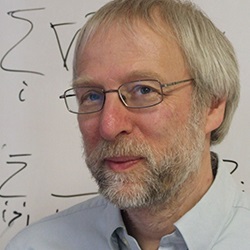New database of molecular line lists lifts the veil on the composition of exoplanet atmospheres
Completed in April 2016, EXOMOL (ExoMol: molecular line lists for exoplanet atmospheres) used a mixture of first principles and empirically-tuned quantum mechanical methods to provide comprehensive transition line lists for molecules found in hot atmospheres. The huge database, which can be used to compute up to 100 billion transitions, will contribute to spectral characterisation and simulation, but will also serve as input to atmospheric models of exoplanets, brown dwarfs, cool stars and other models, including those of combustion and sunspots. Prof. Jonathan Tennyson, who coordinated the project for University College London, highlights how this tool will prove invaluable in deriving the chemical composition, temperature and other fundamental characteristics of the objects the scientific community hopes to characterise thanks to a new generation of telescopes. Why is it valuable for the scientific community to be provided with comprehensive line lists for molecules found in hot atmospheres? The way molecules absorb and emit light gets increasingly complicated with temperature. So modelling the way light passes through a hot atmosphere, such as that of a ‘cool’ star, brown dwarf or exoplanet, requires a huge quantity of data: perhaps several billion lines for a single molecule. EXOMOL has provided extensive line lists for the key molecules required in these studies. How will your work contribute to the effectiveness of new European-funded telescopes? These line lists are essential for interpreting astronomical observations from hot bodies. They provide the underpinning which allows one to extrapolate information from these observations. They are also important for providing models of the bodies in question. How did you manage to create these lists? Our approach is basically theoretical. We try to make a complete quantum mechanical model for how each molecule absorbs light. However, some parts (in particular the precise wavelengths) are very hard to get right by solving the equations of quantum mechanics: they are too complicated to do it accurately enough. So we use all laboratory data there is to help us improve the model. Many of the calculations are huge, so they require very large computers and lots of computing time. How can interested scientists benefit from your work? We provide the data on our website and we are also working with a number of groups to try and provide line lists in more manageable forms. You can imagine that running complex models with billions of lines is tough, so we try to convert our results into forms that are better tuned with models. More specifically, can you provide an example of a situation where EXOMOL will facilitate the work of the scientific community? Probably the best example is our methane result. We created the first comprehensive line list for methane with 10 billion lines — although it is still not complete at the highest temperatures of interest. Using this line list in models gave a fully quantitative model of T-dwarfs, cool failed stars that are sometimes called methane stars, an exercise in which other, previous models had completely failed. Recently we have also been involved in the first study of the atmosphere of a ‘super-earth’ exoplanet. The use of our line lists showed that the only molecule with a clear signature was hydrogen cyanide! This is not a planet I would want to visit. The project ended last month. Are you planning to keep developing your database anyway? Absolutely. We have received some follow-up funding from STFC (the UK research council that funds astronomy research) and we still have a number of ongoing projects. I should add that although the motivation and selection of molecules was aimed very much at astronomy, our line lists are widely used in other fields. Rather remarkably I am UCL’s most cited engineer! We also have a couple of projects funded by people interested in monitoring hot gas emissions from smoke stacks. This environment is surprisingly similar to that of the exoplanets we are studying. EXOMOL Funded under FP7-IDEAS-ERC project website project page on CORDIS
Countries
United Kingdom



